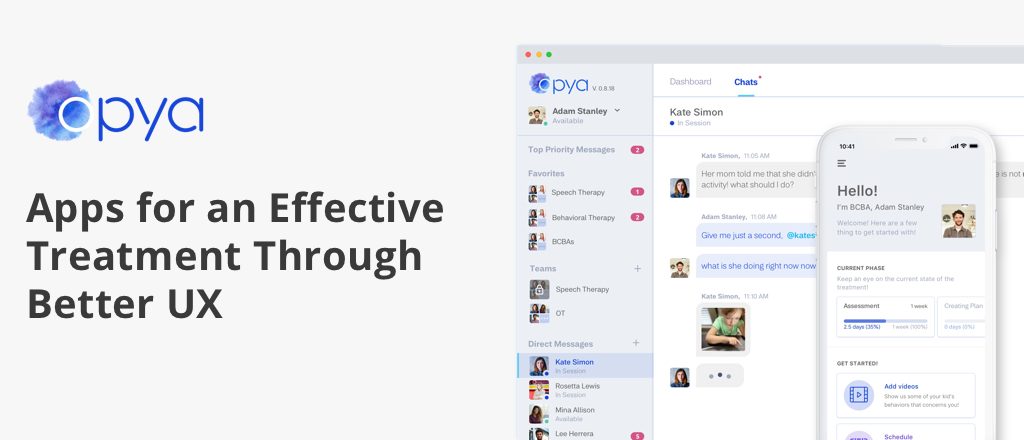At a time when COVID-19 has drastically limited patients’ ability to visit their doctors, telehealth has blossomed at exactly the right moment. The spike in video visits and other digital interactions between patients and the healthcare system is driving a huge wave of accelerated digital transformation in the healthcare industry.
Digital strategies that were previously mapped out in terms of years are now scaled to matter of weeks, if not days. As more health-related interactions rapidly “go digital”, now is the time to think carefully about how we construct those interactions.
For those involved in the development side of digital transformation (DT) in the healthcare sector, the actions we take and the product design principles we employ at this important moment can determine the course that DT in healthcare takes: toward a more human-centered model.
Here are a few basic principles to help guide us all if we want to provide a more human-centered experience in digital healthcare. These ideas benefit the user but they also provide clear benefits to the professionals in healthcare, clinics, and hospitals too.
And that’s important because after all, healthcare institutions are businesses, too. Right now, the stakes are high. Many are seeing falling revenues and higher expenses as they try to navigate the global pandemic that has changed their paradigms so dramatically, possibly forever. With that in mind, here are some principles you can follow for developing a human-centered digital experience in healthcare.
1. Design for patients’ lives
A fundamental rule of human-centered design is implicit in the name itself: design for a human. Humans have lives beyond their “patienthood” and as such, they exist in a much richer context than the medical office – which is where healthcare providers traditionally meet them for their care. With the video visit, practitioners get a fuller glimpse – quite literally – into their patients’ lives.
They see surroundings, clues to a lifestyle, interactions with family members, pets, etc. The observant medical professional can see behaviors and emotions played out in the patient’s natural environment.
Developers can benefit from these observations, too, and design products that fit the lifestyles and behaviors of the patient-users. While they may know how the healthcare providers use and interact with the digital products, insight from telehealth visits can provide valuable information on how patients use and interact with those same products. Digital tools that will be used in patients’ homes should provide solutions that work within that same context, not just the clinical environment where the doctors and nurses are using those tools.
2. Design for holistic solutions
At the crossroads of design and healthcare lies a product that is designed for a living, breathing person to use and which will benefit that person because it views their health from a holistic perspective. In other words, digital solutions in healthcare should go beyond helping patients with clinical practicalities.
They should help people in all aspects of health, creating a “system” rather than an isolation condition. The ideal “healthcare” app should have touchpoints across a person’s entire life — mind, body, and soul.
For example, are they getting enough sleep? Exercise? Social contact? Alone time? Opportunities to relax? Are they sad? Lonely? These are only a few of the factors that affect a person’s health and providing practitioners with these kinds of data can help them treat their patients holistically.

Visit our case study https://makingsense.com/our-work/opya
3. Make evolution permanent
Healthcare institutions that consider technology to always be evolving, and who see their success as directly proportional to how well they can be flexible and adapt to new ideas will see improvements in their bottom lines.
In the Future Health Index, which rates the state of healthcare country by country, countries like Singapore, which ranked high in efficiency also ranked high in care delivery, data collection, and analytics. That suggests that data analysis can reduce the per capita cost of healthcare while also delivering a better experience for both providers and patients.
Yes, new digital products and services will require resources – building them, training staff, deploying them, maintaining them, and, eventually, using data analytics to gain insight and find answers for care – that cost money. But in the end, to have the correct mindset and innovation are the key to survival, just as it is in any other sector like retail, finance, or manufacturing. Staying agile may also help healthcare institutions be more prepared to meet future health care challenges – like another outbreak or a supply chain issue that causes a shortage of materials.
Companies that deliver healthcare were already working on becoming more nimble before the pandemic. Healthcare digital products and services only serve to highlight a movement that was already underway. Now that many are in use because of COVID-19, healthcare organizations can start learning from them and begin planning the next update or even the next product.
With the increased use of Artificial Intelligence, there will be even more ways to incorporate telehealth into the larger scheme of healthcare and wellness: remote monitoring of chronic health conditions like diabetes, for example.
It’s all about continually listening to the needs of the users and innovating ways to make the experience better all around, for everyone.
This moment and the potential of telehealth
Telehealth has enormous potential to change healthcare for the better. The pandemic has created a sense of urgency – in patients, doctors, healthcare institutions administrators, and politicians alike – to grab that potential and harness it for the common good.
As a result, pre-COVID obstacles have melted away in the face of urgency and need for healthcare to continue despite quarantine, lockdown, and general precautions – healthcare must go on, no matter what. If there is a silver lining to the coronavirus, the erosion of those barriers and the acceleration of acceptance of a changed world in healthcare, one that is more digital yet also more human-centered.
